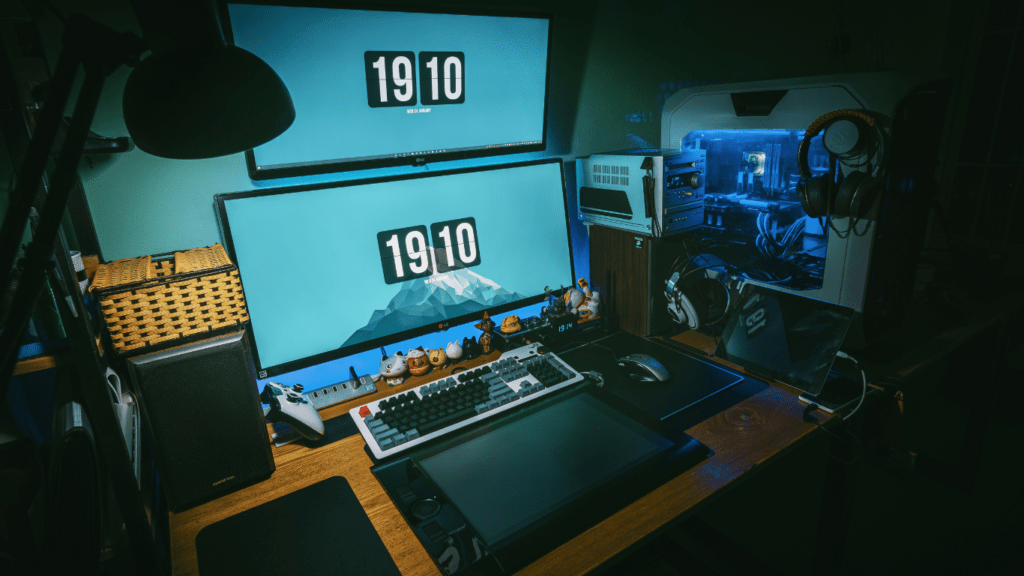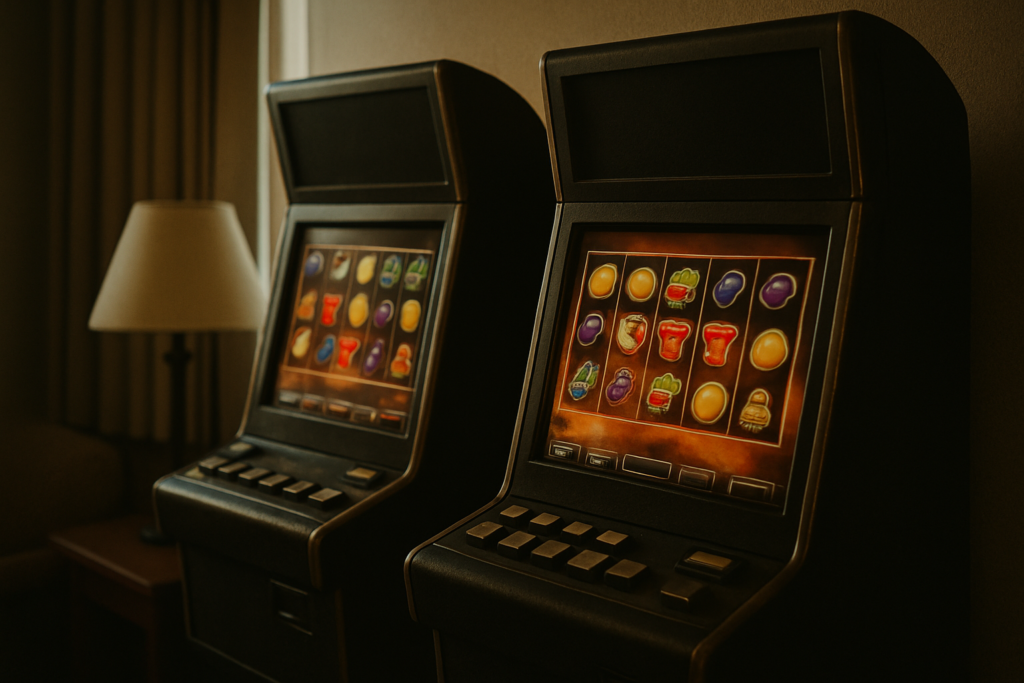Exploring the Horror Genre: Top Scariest Games Ever Made
Several games have set the standard for horror.
- “Silent Hill 2” by Konami is legendary. Its psychological horror, disturbing imagery, and haunting soundtrack create an atmosphere unmatched by most. Players explore the eerie town of Silent Hill, confronting emotional demons and uncovering deeply personal stories.
- “Resident Evil 7: Biohazard” brought the series back to its roots with a first-person perspective. Capcom’s creation offers genuine terror through its immersive gameplay, grotesque enemies, and a creepy, dilapidated setting. The tension builds as players navigate the Baker family’s haunted plantation, encountering increasingly horrifying threats.
- “Amnesia: The Dark Descent” by Frictional Games revolutionized survival horror. With no weapons, players rely on stealth and wits. The sanity mechanic increases panic as darkness and otherworldly creatures close in. The mansion’s claustrophobic corridors add to the suffocating fear.
- “Outlast” by Red Barrels places players in the shoes of an investigative journalist exploring an abandoned psychiatric hospital. Armed only with a night vision camera, players experience relentless chase sequences, grotesque visuals, and a constant sense of vulnerability. The game’s sound design amplifies every jump scare and moment of suspense.
- “Dead Space” by EA Redwood Shores takes horror to space. Players fight terrifying necromorphs in the confines of a deserted spacecraft.
The game’s strategic dismemberment combat, claustrophobic environments, and chilling audio contribute to a feeling of intense dread. These titles illustrate the diverse approaches to horror in gaming.
Whether through psychological terror, survival mechanics, or grotesque visual design, each game delivers a unique, spine-chilling experience.
Exploring these games offers insights into the art of crafting fear and showcases the genre’s ability to evoke profound emotional responses.
The Evolution of Horror Games
Origins and Early Examples
Horror games have captivated players for decades, evolving significantly from their early days.
One of the first notable titles in the genre was “Haunted House” released in 1982. While rudimentary by today’s standards, it laid the groundwork by introducing basic themes of exploration and fear.
Another early example, 1989’s “Sweet Home,” combined horror elements with role-playing mechanics and inspired later classics like “Resident Evil.”
Major Technological Advancements
Technological advancements have driven the evolution of horror games, enhancing their capacity to deliver fear.
3D graphics revolutionized the genre in the 1990s, allowing for more immersive environments and realistic character models.
“Alone in the Dark,” released in 1992, utilized 3D graphics to create an unsettling atmosphere. The introduction of advanced audio engines has also been crucial; developers now use binaural audio to create spatial awareness, amplifying the fear factor.
Virtual reality (VR) has further transformed horror gaming.
Titles like “Resident Evil 7: Biohazard” in VR provide an unprecedented level of immersion, placing players directly into terrifying scenarios.
Motion capture technology has also advanced, enabling more realistic character movements and facial expressions, which heighten emotional engagement.
The rapid progress in AI has allowed for smarter, more unpredictable enemy behavior.
Games such as “Alien: Isolation” showcase advanced AI that keeps players on edge with adaptive enemy tactics.
These technological leaps have continuously pushed the boundaries of what horror games can achieve, making them more terrifying than ever.
Key Elements That Make Games Scary
Use of Sound and Music
Sound and music play crucial roles in creating fear.
Developers use ambient sounds, footsteps, and eerie music to heighten tension. In “Silent Hill,” the unsettling background noises amplify the sense of dread.
“Resident Evil” employs sudden musical crescendos during encounters to startle players.
High-quality sound effects, like the creature growls in “Dead Space,” make the fear feel real.
Visuals and Atmosphere
Visuals and atmosphere craft the spine-chilling aesthetic. Games like “Outlast” use realistic graphics and dim lighting to produce a claustrophobic feel.
The fog in “Silent Hill” restricts vision, creating constant unease. Detailed textures and shadow effects in “Amnesia: The Dark Descent” enhance immersion and terror.
The effective use of color, lighting, and design elements can transform any environment into a nightmare.
Storytelling and Uncertainty
Engaging storytelling and elements of uncertainty elevate horror experiences.
In “Layers of Fear,” the narrative’s psychological depth keeps players on edge.
Unpredictability in “Alien: Isolation,” due to the AI-driven xenomorph, ensures no encounter feels safe.
Plot twists and fragmented storylines in “Eternal Darkness: Sanity’s Requiem” blur reality, intensifying the horror.
An effective narrative keeps the player guessing and deeply invested in the terror unfolding before them.
Top Scariest Horror Games to Play
 Classic Horror Games
Classic Horror Games
- Silent Hill 2
Silent Hill 2, released in 2001 by Konami, stands out for its psychological horror elements. James Sunderland’s search for his deceased wife in the fog-covered town of Silent Hill involves disturbing creatures and eerie atmospheres. The game excels in creating psychological tension with a deep storyline and unsettling visuals.
- Resident Evil
Capcom’s Resident Evil series kicked off in 1996, revolutionizing the survival horror genre. Players control characters like Chris Redfield and Jill Valentine in a mansion filled with zombies and other bioengineered horrors. It’s limited ammo and intricate puzzles intensify the fear factor, making each encounter nerve-wracking.
- Alone in the Dark
Released in 1992, Alone in the Dark by Infogrames is one of the pioneers of 3D survival horror. Set in a haunted mansion, players solve puzzles and fight supernatural enemies. Its innovative use of 3D graphics and fixed camera angles sets a foundation for future horror games.
Modern Terrifying Titles
- Amnesia: The Dark Descent
Amnesia: The Dark Descent by Frictional Games, released in 2010, emphasizes helplessness and psychological horror. Players navigate a dark, foreboding castle, solving puzzles and avoiding grotesque monsters.
The game’s sanity meter adds an extra layer of tension, as characters become more vulnerable when frightened.
- Outlast
Outlast, developed by Red Barrels and released in 2013, immerses players in a first-person horror experience. Set in an abandoned psychiatric hospital, players control investigative journalist Miles Upshur. Armed only with a night-vision camcorder, Miles must evade deranged inmates, increasing the sense of vulnerability. - Resident Evil 7: Biohazard
Capcom’s Resident Evil 7: Biohazard, released in 2017, brings the series back to its survival horror roots. Played from a first-person perspective, the game pits players against the horrifying Baker family in their dilapidated mansion. The use of VR enhances immersion, making the terror feel much closer.
- Alien: Isolation
Creative Assembly’s Alien: Isolation from 2014 captures the essence of the Alien film franchise. Players control Amanda Ripley as she tries to unravel the mystery behind her mother’s disappearance. The game uses advanced AI to create a relentless Xenomorph enemy, making each encounter unpredictable and terrifying.
These games blend elements like sound, atmosphere, and storytelling to craft unforgettable horror experiences that stand the test of time.
The Impact of Horror Games on Players
Psychological Effects
Horror games can have profound psychological effects on players. Studies show that exposure to horror content activates the amygdala, the brain region responsible for fear responses.
For example, games like “P.T.” and “Amnesia: The Dark Descent” often induce anxiety and adrenaline spikes, creating a sense of dread that can persist even after the game ends.
Recurrent exposure to such gameplay can result in heightened sensitivity to scare stimuli, causing players to react more intensely to sudden sounds or movements in real life.
However, some players find these fear responses exhilarating, leading to repeated engagement with horror games to experience the thrill of overcoming their fears.
Influence on Gaming Culture
Horror games have significantly influenced gaming culture. They introduced gameplay mechanics now standard in various genres, such as limited resources and save points, which heighten tension.
For instance, the “Resident Evil” series popularized survival horror mechanics that genre fans now expect.
Horror games also drive innovation in storytelling, offering non-linear narratives and multiple endings.
Games like “Silent Hill 2” and “Outlast” have inspired a plethora of fan theories and in-depth discussions among gaming communities.
As a result, horror games not only entertain but also contribute to the evolution and diversity of the gaming landscape.


 Alice McClurg - Content Director Alice McClurg leads the editorial team as Content Director at Jackpot Journey Spot. With a keen eye for emerging trends and a deep understanding of the gambling landscape, Alice curates in-depth articles, event highlights, and game overviews. Her expertise helps guide readers through the ever-evolving world of gambling, ensuring they stay informed and entertained.
Alice McClurg - Content Director Alice McClurg leads the editorial team as Content Director at Jackpot Journey Spot. With a keen eye for emerging trends and a deep understanding of the gambling landscape, Alice curates in-depth articles, event highlights, and game overviews. Her expertise helps guide readers through the ever-evolving world of gambling, ensuring they stay informed and entertained.
